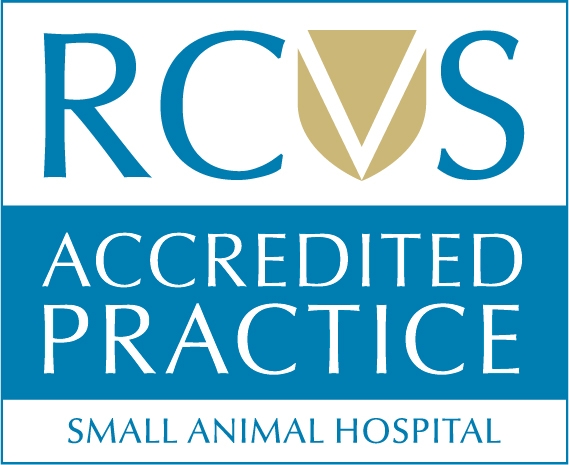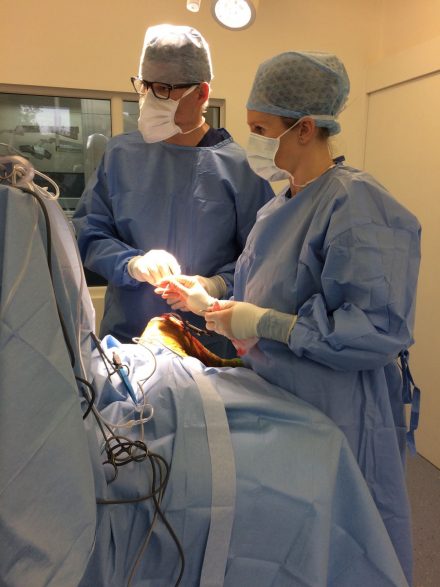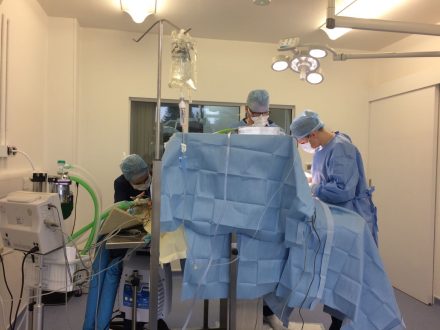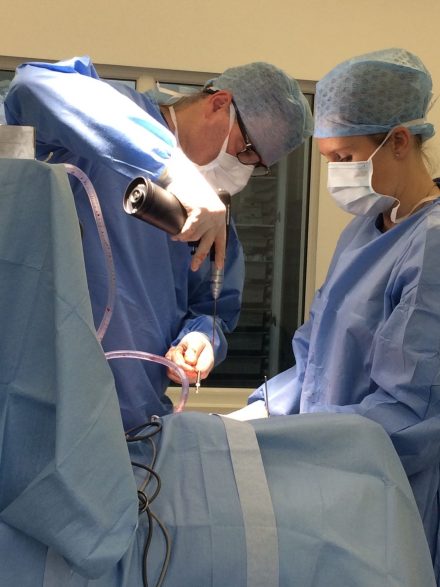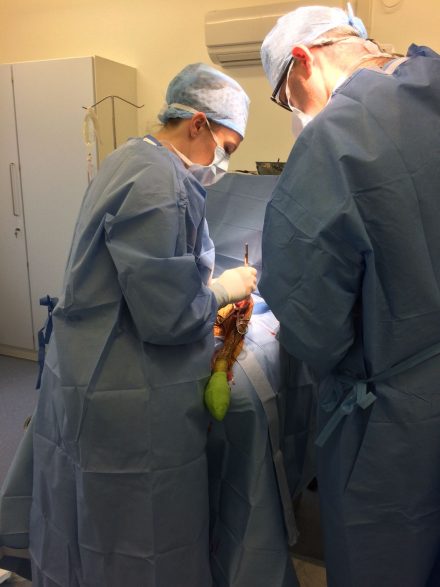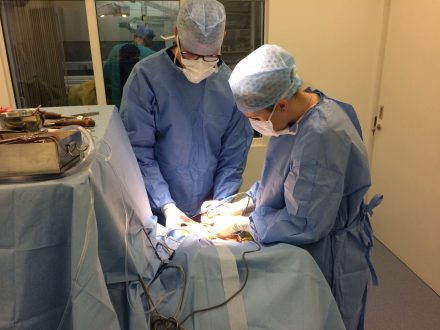The cranial cruciate ligament (CCL) is a band of tough fibrous tissue that attaches the front of the femur (thigh bone) to the back of the tibia (shin bone). It prevents the femur moving backward relative to the tibia and helps to prevent over-rotation (inward) of the knee joint.
The most common cause of cranial cruciate ligament disease is caused by a slow degeneration or fraying of the ligament (similar to fraying of a rope). Other factors may include obesity, individual conformation and inflammatory conditions of the joint.
Limping is the most common sign of CCL disease and it may appear suddenly, have a slow progression or in some cases be intermittent.
Here at The Meopham Veterinary Hospital a Tibial Plateu Leveling Osteotomy (TPLO) procedure is, in most cases, our chosen method for repair. This is based on medical research showing recovery after TPLO surgery is advantageous over other techniques with a shorter recovery in the short-term and better long-term outcome.
All TPLO procedures are carried out by Martin Hobbs, Penny Barnard-Brown and Rupert Davenport. They all continued with post graduate study and have each gained a certificate in small animal surgery. As a general rule approximately 90% of dogs will return to normal activity after a TPLO.
For additional information see our client information sheet or please do not hesitate to get in touch at referrals@meophamvets.co.uk
We are easily accessible from both the M20 and the A2. Conveniently located on the A227 only 15 minutes from Gravesend.
Client Information Sheet
